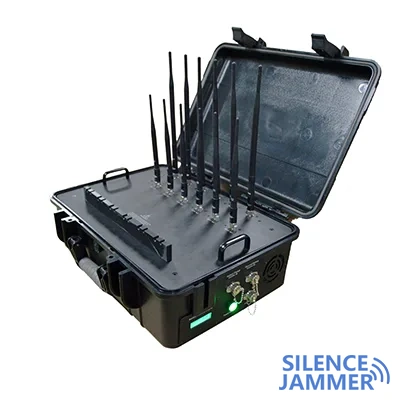A cell phone data blocker is a device used to block mobile phone signals in a specific environment. It interferes with the communication between the mobile phone and the base station by emitting electromagnetic waves of a specific frequency, making it impossible for the mobile phone to receive or send signals. Optimizing the frequency coverage of a cell phone data blocker is an important step to ensure its effectiveness. This article will detail how to optimize the frequency coverage of a cell phone data blocker.
The Importance of Frequency Coverage
Different mobile communication technologies (such as 2G, 3G, 4G, and 5G) use different frequency bands. In order to effectively interfere with these signals, the cell phone data blocker needs to cover the corresponding frequency bands. Optimizing the frequency coverage ensures that the jammer can block all types of mobile phone signals and improve the jamming effect.

Before optimizing the frequency coverage, you first need to understand the frequency bands used by different communication technologies:
- 2G (GSM): 850 MHz, 900 MHz, 1800 MHz, 1900 MHz
- 3G (UMTS): 850 MHz, 900 MHz, 1900 MHz, 2100 MHz
- 4G (LTE): 700 MHz, 800 MHz, 1800 MHz, 2600 MHz
- 5G: 600 MHz, 700 MHz, 3.5 GHz, 26 GHz, etc.
After understanding these frequency bands, you can choose the appropriate frequency coverage for different application scenarios.
Adjust the operating frequency of the jammer
Modern cell phone jammers usually have an adjustable operating frequency function. Here are several common adjustment methods:

1. Frequency selection switch
Some jammers are equipped with a frequency selection switch, and users can select a specific frequency band for interference as needed. For example, you can choose to interfere only with the 2G band, or interfere with the 2G, 3G, 4G and 5G bands at the same time. This method is simple and intuitive, suitable for quick adjustments.
2. Digital control panel
More advanced jammers use digital control panels, which allow users to precisely adjust the operating frequency by entering parameters. Through the control panel, you can set the specific frequency band range covered by the jammer, such as from 800 MHz to 2600 MHz. This method is more flexible and suitable for application scenarios that require high-precision control.
3. Automatic frequency scanning
Some jammers have an automatic frequency scanning function that can automatically detect the surrounding signal bands and adjust the operating frequency as needed. This method is smart and convenient and suitable for environments where the specific frequency band is uncertain.
Using multi-band jammers
Multi-band jammers can cover multiple frequency bands at the same time, ensuring comprehensive interference with various communication technologies. When choosing a multi-band jammer, you need to pay attention to the following points:
1. Frequency band range
Make sure the frequency band range covered by the jammer includes all common mobile communication bands. A good multi-band jammer should cover the main frequency bands between 700 MHz and 2600 MHz, as well as the higher frequency bands used by 5G.
2. Power allocation
In a multi-band jammer, the transmit power of different frequency bands may be different. Ensure that the transmit power of each frequency band is high enough to achieve effective interference. The power output of different frequency bands can be balanced through the built-in power adjustment function.
3. Antenna configuration
Multi-band jammers are usually equipped with multiple antennas, each of which is responsible for transmitting interference signals in different frequency bands. Reasonable configuration of antennas can improve the interference effect. You can choose omnidirectional antennas to cover a large area, or use directional antennas to concentrate on jamming a specific area.
Optimizing the frequency coverage of cell phone data blockers is an important step to ensure their effectiveness. By understanding the frequency bands of different communication technologies, reasonably adjusting the operating frequency of the jammer, selecting the appropriate multi-band jammer, considering environmental factors, and regularly testing and adjusting, the best interference effect can be achieved. In practical applications, it is necessary to flexibly adjust the frequency coverage according to the specific environment and needs to ensure the effectiveness and safety of the jammer.


